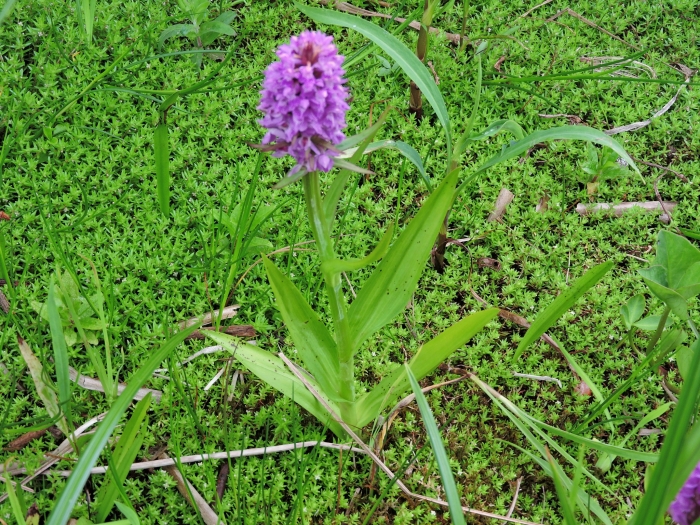Swamp Stonecrop
(Crassula helmsii)
Swamp Stonecrop (Crassula helmsii)
/
/

Susan Marley
CC BY 4.0
Image By:
Susan Marley
Recorded By:
Copyright:
CC BY 4.0
Copyright Notice:
Photo by: Susan Marley | License Type: CC BY 4.0 | License URL: http://creativecommons.org/licenses/by/4.0/ | Rights Holder: Susan Marley | Publisher: iNaturalist | Date Created: 2020-06-08T15:46:32-07:00 |



















































Estimated Native Range
Summary
Crassula helmsii, commonly known as Swamp Stonecrop, is an evergreen succulent native to still or slow-moving freshwaters and damp terrestrial sites in Australia, including Tasmania. It is often found in shallow water or at the water’s edge, where it forms dense mats. This species is particularly adaptable, capable of growing both fully submerged and as a marginal pond plant. Swamp Stonecrop typically has a height of 2-4 inches (5-10 cm) and can spread indefinitely in width if conditions allow. The plant produces small, star-shaped white flowers with four petals during the summer, which emerge on long stalks from the upper leaf axils and are quite showy when viewed en masse.
Swamp Stonecrop is valued for its versatility in water gardens and as an oxygenating plant in cool-water aquariums. Its ability to grow in a range of aquatic environments makes it a popular choice for pond margins and bog gardens. However, its vigorous growth habit requires regular maintenance to prevent it from becoming invasive. In cultivation, it thrives in full sun to part shade, and while it can tolerate a range of water conditions, it prefers high moisture or aquatic environments with slow or standing drainage. In regions where it is not native, such as the UK, it is listed as an invasive species and is subject to control regulations.CC BY-SA 4.0
Swamp Stonecrop is valued for its versatility in water gardens and as an oxygenating plant in cool-water aquariums. Its ability to grow in a range of aquatic environments makes it a popular choice for pond margins and bog gardens. However, its vigorous growth habit requires regular maintenance to prevent it from becoming invasive. In cultivation, it thrives in full sun to part shade, and while it can tolerate a range of water conditions, it prefers high moisture or aquatic environments with slow or standing drainage. In regions where it is not native, such as the UK, it is listed as an invasive species and is subject to control regulations.CC BY-SA 4.0
Plant Description
- Plant Type: Succulent
- Height: 2.5-3.5 feet
- Width: 6-12 feet
- Growth Rate: Moderate
- Flower Color: White
- Flowering Season: Summer
- Leaf Retention: Evergreen
Growth Requirements
- Sun: Full Sun
- Water: High, Aquatic
- Drainage: Slow, Standing
Common Uses
Bee Garden, Deer Resistant, Drought Tolerant, Low Maintenance
Natural Habitat
Still or slow-moving freshwaters and damp terrestrial sites in Australia
Other Names
Common Names: New Zealand Pigmyweed, Swamp-Stonecrop, Swamp Crassula, Nadelkraut-Dickblatt, Crassule Des Étangs, Watercrassula, Sydfyrling, Australian Stonecrop, Australian Swamp Stonecrop, Helms Dickblatt, New Zealand Pygmyweed
Scientific Names: , Crassula helmsii, Tillaea recurva, Bulliarda recurva, Crassula recurva, Tillaea helmsii, Tillaea verticillaris,
GBIF Accepted Name: Crassula helmsii (Kirk) Cockayne